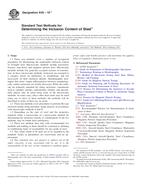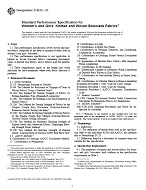1.1 In general, the physical and electrical properties of plastics are influenced by temperature and relative humidity in a manner that materially affects test results. In order to make reliable comparisons between different materials and between different laboratories, it is necessary to standardize the humidity conditions, as well as the temperature, to which specimens of these materials are subjected prior to and during testing. This practice defines procedures for conditioning plastics (although not necessarily to equilibrium) prior to testing, and the conditions under which they shall be tested.
1.2 For some materials, it is possible that a material specification exists that requires the use of this practice, but with some procedural modifications. The material specification takes precedence over this practice. Refer to the material specification before using this practice. Table 1 in Classification D 4000 lists the ASTM material specifications that currently exist.
1.3 This standard does not purport to address all of the safety concerns, if any, associated with its use. It is the responsibility of the user of this standard to establish appropriate safety and health practices and determine the applicability of regulatory limitations prior to use.
Note 1 – This standard and ISO 291 address the same subject matter, but differ in technical content. ISO 291 describes only two temperature and humidity conditions for conditioning or testing, or both.
Product Details
- Published:
- 11/01/2008
- Number of Pages:
- 4
- File Size:
- 1 file , 76 KB
- Redline File Size:
- 2 files , 150 KB


